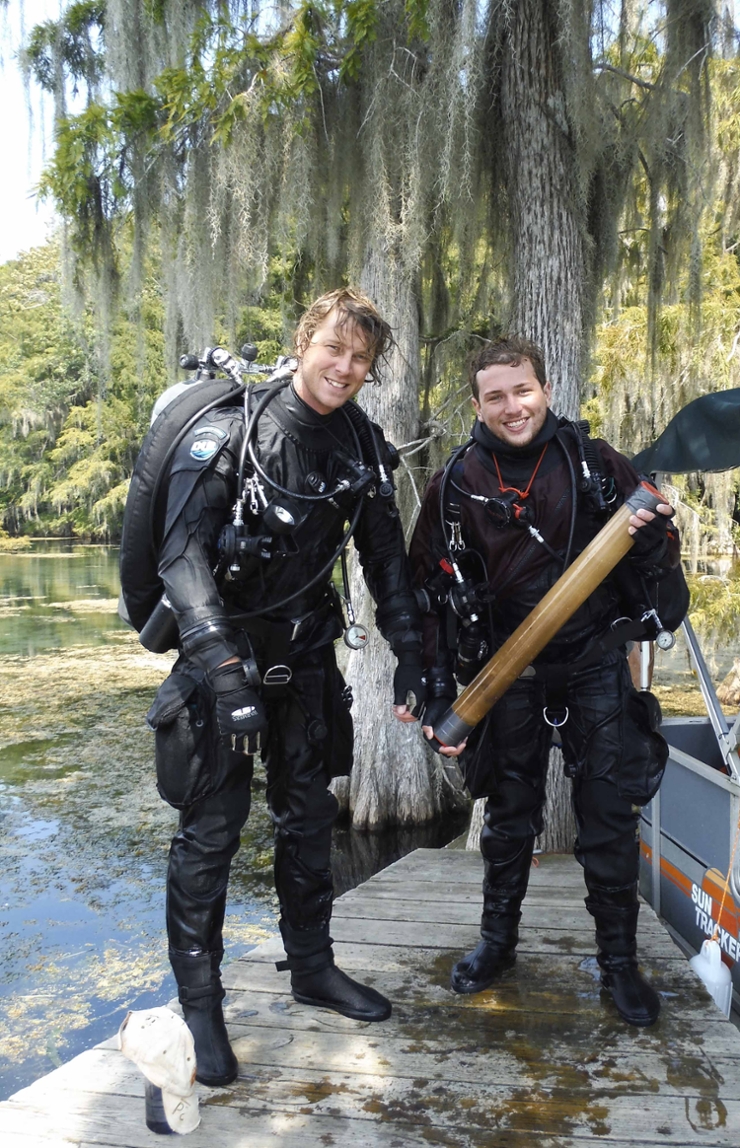Reconstructing Climate and Environmental Change with Sediments
Our goals are to provide information on how coastal environments and ecosystems developed into their present state, and how they are likely to change in the future from climate change. More specifically, our research team uses the sediments archived in sinkholes, flooded caves, and other coastal environments to better understand how climate, sea level, terrestrial landscapes, and coastal regions have changed over thousands of years. However, collecting sediment cores is just the first first step. After collection, sediment cores are transported back to the laboratory where they undergo a rigorous multi-proxy analysis, which includes analysis of microfossils (e.g., ostracodes, foraminifera, testate amoebae), sediment geochemistry (stable isotopes, trace metals, organic matter analysis), radiometric dating, and other techniques.
In many cases, the only way we can collect sediment cores is by scientific diving methods, especially in underwater caves. Graduate students in our group can expect to gain considerable field experience, and typically travel as part of their course of study. We have ongoing research projects in the Bahamas, Turks and Caicos, Mexico, Cozumel, Bermuda, and Florida.
Click here to learn more about Pete van Hengstum for more information.

